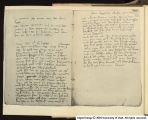| Title |
Papermaking through eighteen centuries, by Dard Hunter |
| Call Number |
TS1090 .H86 1930; Record ID 9910193590102001 |
| Date |
1930 |
| Creator |
Hunter, Dard, 1883-1966 |
| Publisher |
New York, W.E. Rudge, 1930. |
| Subject |
Papermaking; Watermarks; Paper |
| Source Physical Dimensions |
xvii, 358 p. incl. illus., plates, facsims. fold. front., double pl. 25 cm. |
| Type |
Text |
| Format |
image/jpeg |
| Identifier |
TS1090 .H86 1930 |
| Source |
Original Book : Papermaking through eighteen centuries, by Dard Hunter |
| Language |
eng |
| Relation |
Is part of the Dard Hunter Collection, Marriott Library, University of Utah |
| Collection Name |
Rare Books Collection |
| Holding Institution |
Rare Books Division, Special Collections, J. Willard Marriott Library, University of Utah |
| Rights |
 |
| ARK |
ark:/87278/s6ws8shs |
| Setname |
uum_rbc |
| ID |
122187 |
| Reference URL |
https://collections.lib.utah.edu/ark:/87278/s6ws8shs |




































































































































































































































































































































































































